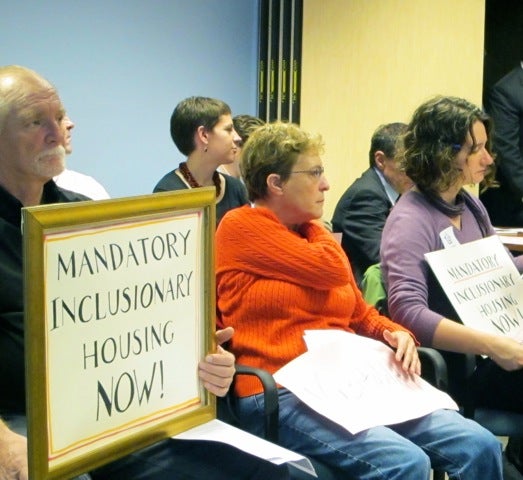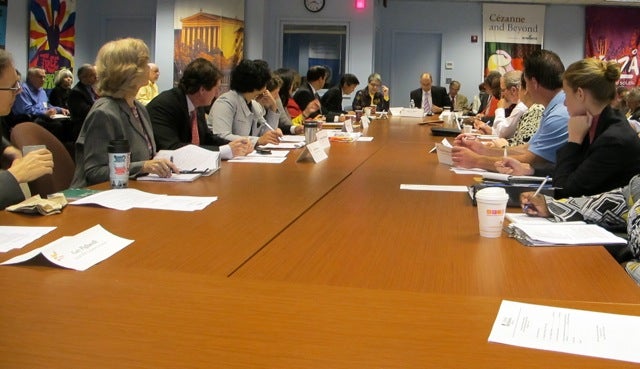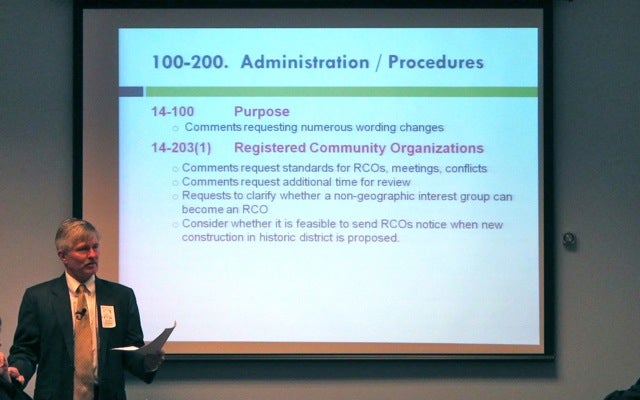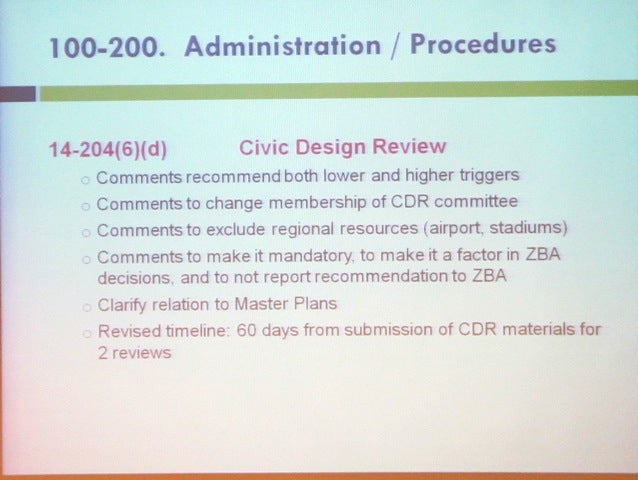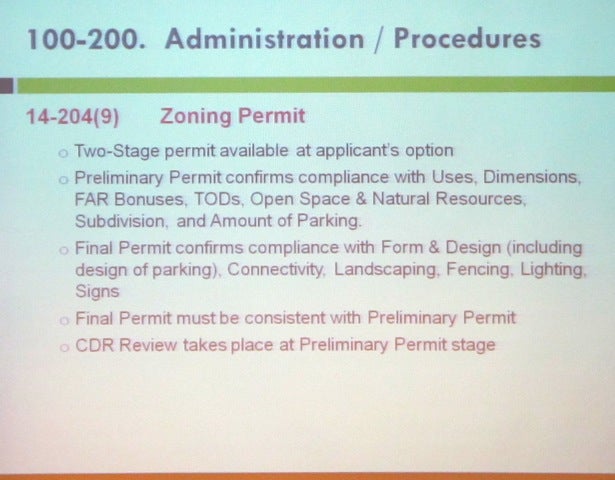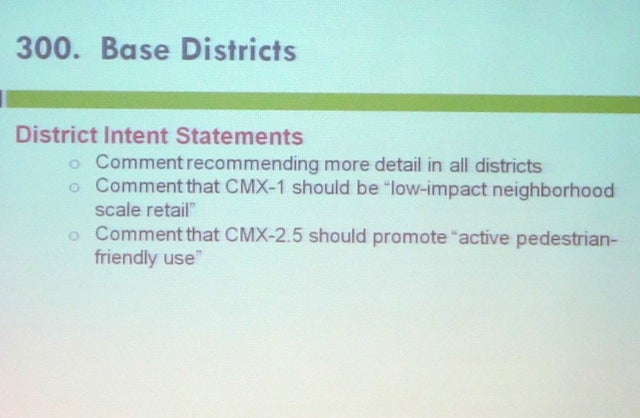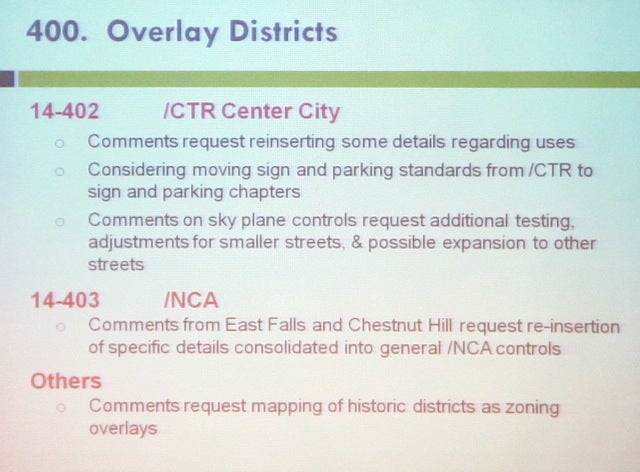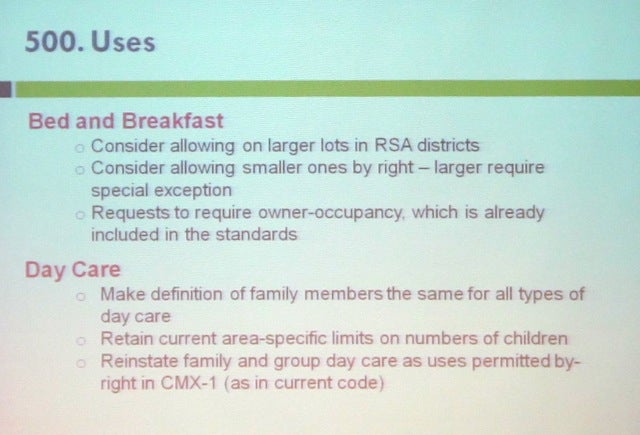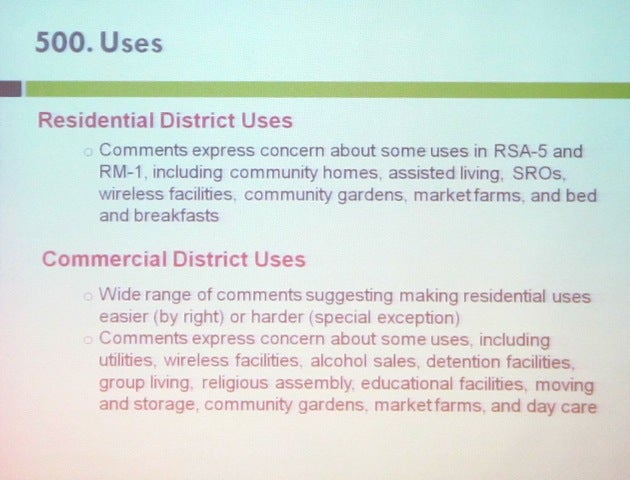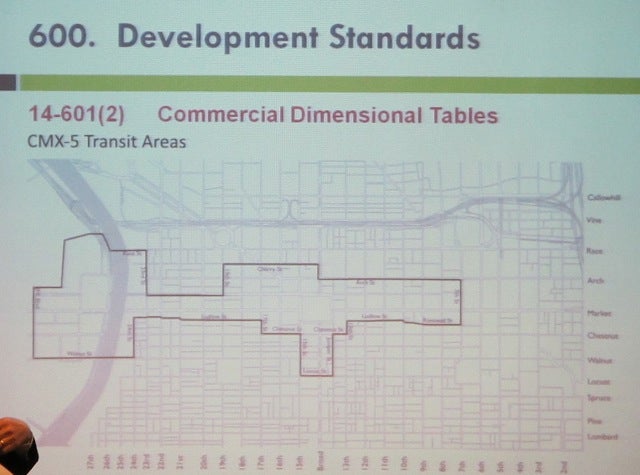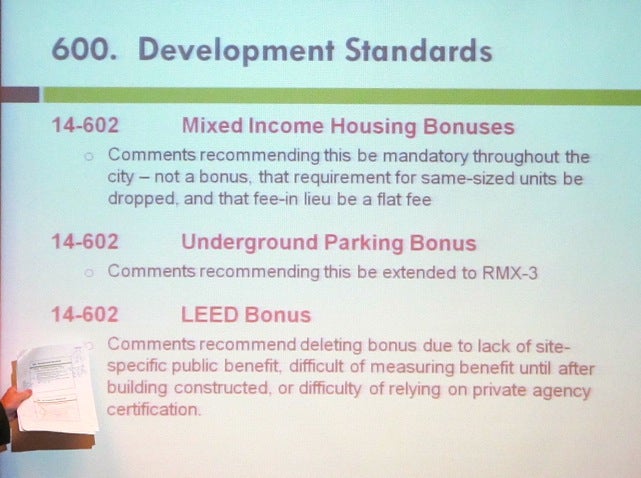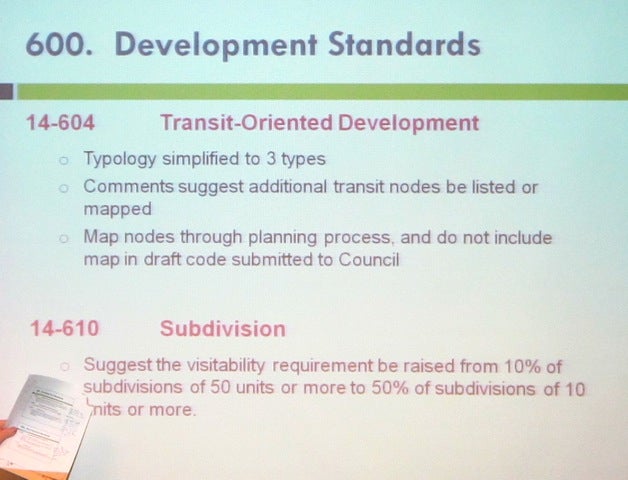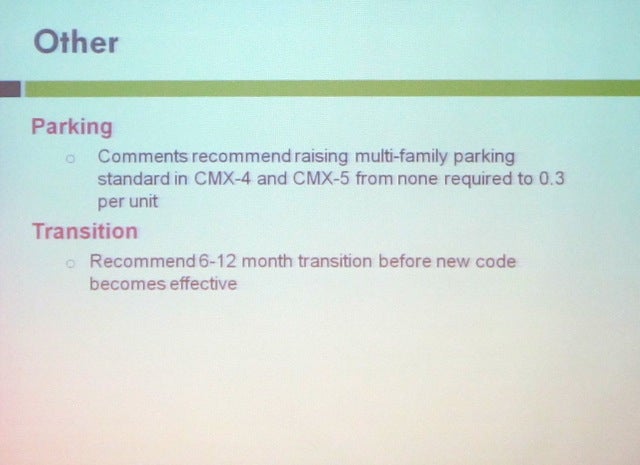ZCC meeting: Changes afoot, redline draft imminent
Ch-ch-ch-changes! At Wednesday’s meeting of Philadelphia’s Zoning Code Commission: commissioner Andy Toy announced that he’s resigning from the commission effective at the end of the week, to run for an at-large City Council seat next year. Eva Gladstein announced that a redlined revision of the draft zoning code will be available next week. Parking requirements for residences in CMX-4 and -5, where the largest buildings in Philadelphia may be built, are being restored back to 0.3 spaces per unit from zero. Transit-oriented development will be simplified to three types from four, and will be managed through the zoning regulations, not through the code itself. The ZCC introduced a new, opt-in, two stage zoning permit process. And the next ZCC meeting is December 15 (not December 8) and will be held at 1515 Arch Street at 8:00 a.m.
After Wednesday’s meeting opened with Toy’s announcement that he is resigning from the ZCC effective at the end of this week, ZCC executive director Eva Gladstein gave a brief report reminding the commissioners and meeting attendees that submitted written comments on the code are now available to the public (which can be found online here and here). Commissioner Peter Kelsen, who chaired Wednesday’s meeting, emphasized that the day’s discussion would center on new topics of concern, matters on which the ZCC received input from a number of stakeholders, and items of ongoing discussion.
“Today we are not discussing comments that support text language and support provisions of the code,” Kelsen said, and then, to laughter from meeting attendees, “so you will not see people agreeing with provisions.”
After consultant Don Elliott’s presentation, even with commissioner Stella Tsai’s opening comment that Elliott spoke not on his own behalf, but on behalf of the collective ZCC effort, the criticism, both self- and otherwise, began.
One point of continuing discussion at the commission is how to handle small residential lots that are out of compliance with the zoning code. Commissioner and zoning attorney Richard DeMarco expressed concern about how developers can construct infill houses and buildings that match the context of their neighbors, if they have acquired a number of tracts or a large tract, and if the subdivision regulations require that lots be of a larger size. Elliott and Kelsen both emphasized that the work plan committee was still working to resolve those issues.
In his presentation, Elliott also introduced a new two-stage process for acquiring zoning permits. Builders could elect to opt in to the process. In the first stage, the Department of Licenses and Inspections would issue a preliminary permit, based on whether the plans comply use, dimensional, floor-area, transit-oriented development, open space, subdivision and parking regulations. The second stage, the final permit, would ensure compliance with remaining regulations such as form and design, connectivity, landscaping, fencing, lighting, and sign standards. Toy expressed concern about the timeline for developers, questioning whether ” if you put in all the time and effort and get rejected at the very end, it forces developers to pull back what they really might want to show or to do up front.”
The public comment section on Wednesday was much more extensive than at previous meetings this fall, lasting for over an hour. Jeff Hornstein, speaking on behalf of the Philadelphia Campaign for Housing Justice, argued for a mandatory affordable housing, and that City Council has favored such a mandate.
Gary Spahn, a resident of Southwest Center City, worried that “there was a dual requirement of percentage open area and percentage occupied area” for any given lot. He suggested that the possibility of counting a roof—be it decked or otherwise—as open area, runs counter to the idea of balancing built-up and open space.
Jeff Carpineta of the East Kensington Neighbors Association reiterated his concern about the possibility of transit-oriented development coming to the York-Dauphin stop of the Market-Frankford el. In that neighborhood, small rowhouses run up to the tracks, and EKNA worries that allowing increased building height near the station will result in outsized development.
“People feel very clear in our community that they don’t want to live among 4-story buildings,” Carpineta said. “We hope the height portion of this doesn’t become a source of greater tension.”
Elliott suggested that the ZCC should avoid creating another new or different set of standards, but also that communities may be able to remove themselves from the TOD map, if neighborhood resistance exists.
Joe Schiavo from Old City Civic Association asked the ZCC to consider ways to notify developers early in their processes that a site or building has a restrictive historic designation. David Feldman of Right Size Homes suggested guidance be offered to neighborhood groups when the revision process moves into the remapping phase. He also expressed concern that some zoning districts that currently accommodate duplexes, but not larger multi-unit apartment buildings, were being consolidated into others. Craig Schelter, speaking on behalf of the Development Workshop, reiterated concerns with the role of the Planning Commission in permitting, the legal questions raised by an ad hoc Philadelphia Bar Association committee of land use attorneys, and about the form and design standards.
With an aging community, the problem of old housing stock not meeting the needs of residents is becoming an issue for Philadelphia (http://planphilly.com/should-philadelphia-homes-have-first-floors-are-accessible-all). Rocco Iancullo, a staff attorney with the Disability Rights Network of Pennsylvania, argued that the code revisions visitability requirements—that developments over 50 units must make 10 percent of them visitable—are insufficent to the city’s needs. He asked that the code be required to make any new developments of over 10 units have 50 percent of those units qualify as visitable.
“There are several municipalities around the country that do require 100 percent visitability in market-rate developments, and in some of these municipalities they did withstand legal challenges even up to the state supreme court, where the courts viewed this as nothing other than another building design standard such as fire codes and things like that.” Iancullo said, going on to cite a benefit to owners or managers of visitable units. “The cost of retrofitting units for people who become disabled or through old age are much higher than the cost of doing visitability on the front end.”
“The spirit of visitability is not met by the current proposal,” Iancullo said. “People with disabilities and elderly people should have the right to be able to visit their family members and be included as full members of the community.”
Contact the reporter at ngilewicz@planphilly.com
Elliott suggested that the ZCC should avoid creating another new or different set of standards, but also that communities may be able to remove themselves from the TOD map, if neighborhood resistance exists.
Joe Schiavo from Old City Civic Association asked the ZCC to consider ways to notify developers early in their processes that a site or building has a restrictive historic designation. David Feldman of Right Size Homes suggested guidance be offered to neighborhood groups when the revision process moves into the remapping phase. He also expressed concern that some zoning districts that currently accommodate duplexes, but not larger multi-unit apartment buildings, were being consolidated into others. Craig Schelter, speaking on behalf of the Development Workshop, reiterated concerns with the role of the Planning Commission in permitting, the legal questions raised by an ad hoc Philadelphia Bar Association committee of land use attorneys, and about the form and design standards.
With an aging community, the problem of old housing stock not meeting the needs of residents is becoming an issue for Philadelphia (http://planphilly.com/should-philadelphia-homes-have-first-floors-are-accessible-all). Rocco Iancullo, a staff attorney with the Disability Rights Network of Pennsylvania, argued that the code revisions visitability requirements—that developments over 50 units must make 10 percent of them visitable—are insufficent to the city’s needs. He asked that the code be required to make any new developments of over 10 units have 50 percent of those units qualify as visitable.
“There are several municipalities around the country that do require 100 percent visitability in market-rate developments, and in some of these municipalities they did withstand legal challenges even up to the state supreme court, where the courts viewed this as nothing other than another building design standard such as fire codes and things like that.” Iancullo said, going on to cite a benefit to owners or managers of visitable units. “The cost of retrofitting units for people who become disabled or through old age are much higher than the cost of doing visitability on the front end.”
“The spirit of visitability is not met by the current proposal,” Iancullo said. “People with disabilities and elderly people should have the right to be able to visit their family members and be included as full members of the community.”
WHYY is your source for fact-based, in-depth journalism and information. As a nonprofit organization, we rely on financial support from readers like you. Please give today.




